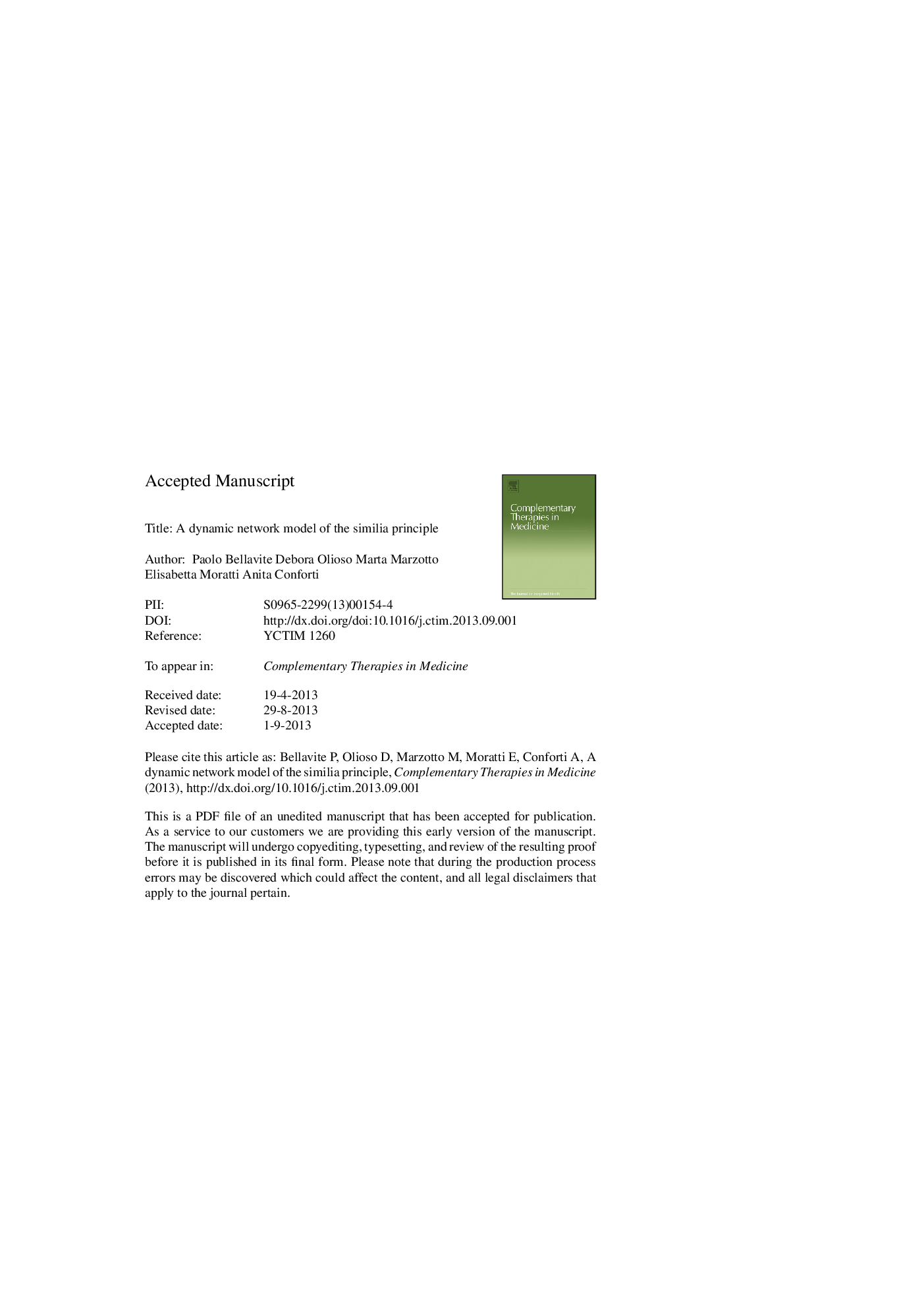| Article ID | Journal | Published Year | Pages | File Type |
|---|---|---|---|---|
| 5865754 | Complementary Therapies in Medicine | 2013 | 29 Pages |
Abstract
The use of drugs in high dilutions and the principle of similarity (or “similia”) are two basic tenets of homeopathy. However, the plausibility of both is a subject of debate. Although several models have been proposed to explain the similia principle, it can be best understood and appreciated in the framework of complexity science and dynamic systems theory. This work applies a five-node Boolean network to show how self-organization and adaptation are relevant to rationalizing this traditional medical principle. Simulating the trajectories and attractors of the network system in the energy state-space provides a rudimentary and qualitative illustration of how targeted external perturbations can have pathological effects, leading to permanent, self-sustaining alterations. Similarly, changes that conversely enable the system to find its way back to the original state can induce therapeutic effects, by causing specific shifts in attractors when suitable conditions are satisfied. Extrapolating these mechanisms to homeopathy, we can envisage how major changes in the evolution of homeodynamic systems (and, eventually, healing of the entire body) can be achieved through carefully selected remedies that reproduce the whole symptom pattern of the ill state.
Related Topics
Health Sciences
Medicine and Dentistry
Complementary and Alternative Medicine
Authors
Paolo Bellavite, Debora Olioso, Marta Marzotto, Elisabetta Moratti, Anita Conforti,
